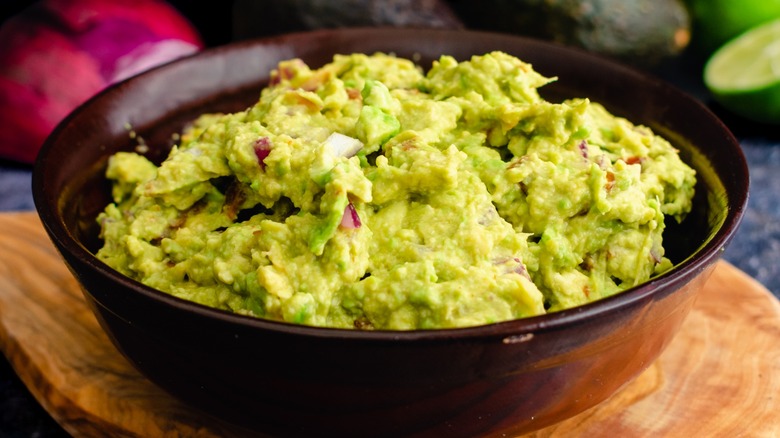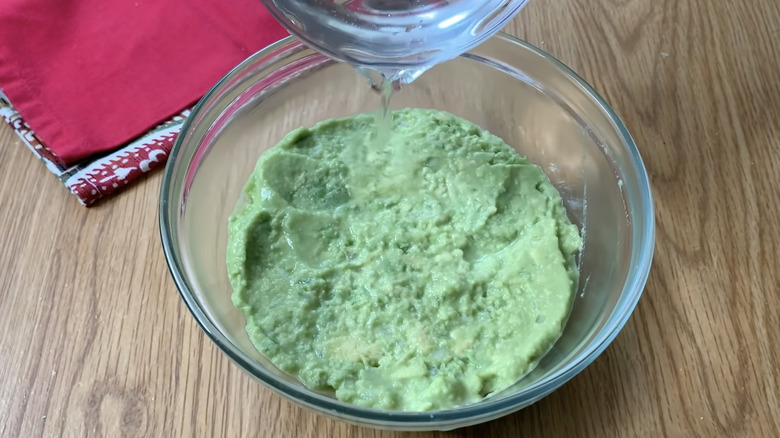Store Guacamole With A Layer Of Water To Keep It Fresh
Guacamole is a near-perfect snack: It's healthy, delicious, and easy to make. However, the popular dip has one major flaw. Guacamole doesn't keep well — and, as easy as it is to gorge yourself on guac, you'll inevitably end up with leftovers at some point. If they're not stored properly, those leftovers will turn an unappealing brown color in a matter of hours.
Avocado flesh contains an enzyme that reacts to oxygen, which means that it starts to oxidize and brown as soon as it's exposed to air. As long as it's consumed within three days, oxidized brown guacamole is perfectly safe to eat, but it's nowhere near as appetizing as the fresh stuff. To avoid oxidation during storage, don't let your guacamole come in contact with air. One easy way of doing this is to store the dip under a layer of water. Simply smooth the surface of the guac and pour water on top until it's entirely submerged.
Then, when you're ready to eat it, pour the water off and stir any remaining water into the guacamole. While you might find success using lemon or lime juice instead of water, water won't change the flavor of the dip and necessitate an impromptu trip to the grocery store. What's more, the dense, fatty avocado flesh prevents the guacamole from absorbing too much water, so the texture won't change much, either. Your leftover guac will be just as appetizing as it was when it was made.
How long will guacamole last in water?
Of course, water won't preserve the dip forever. According to FoodSafety.gov, avocados last three to four days in the fridge, so it's a good idea to follow the same advice for any guacamole you make at home. After that, it's best to throw your guac away, even if it still looks good to go. In 2022, a viral hack for storing whole avocados in water prompted the U.S. Food and Drug Administration (FDA) to issue a warning about potential salmonella and listeria contamination.
Some sources have expressed concern that the same advice could apply to guacamole. However, it's worth noting that the study only addressed whole avocados that were submerged with the skin intact. As an FDA spokesperson explained to Newsweek, listeria is most commonly found on avocado skins, not in avocado flesh. The FDA's study tested avocados after they were submerged in water for 15 days, which gave the bacteria ample time to proliferate in the water and enter the fruits' flesh. Still, the FDA hasn't elaborated on whether or not water is a safe way to store guacamole.
Listeria isn't dangerous to most healthy adults, but the FDA noted that it can cause serious problems for those who are elderly, pregnant, or immunocompromised. If you — or anyone who's going to be eating your guac — are part of one of those groups, it might be a good idea to find an alternate storage method. To mitigate the risk of contamination, you should always wash avocados (and any other fruits or vegetables that you're adding to your guacamole) thoroughly before cutting, even if you're not eating the skin. While not suited for long-term storage, this water trick will surely keep your guac fresh and green for a few hours before a party and can really come in handy in a pinch.

